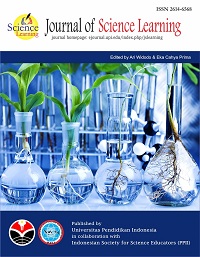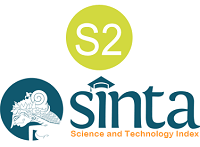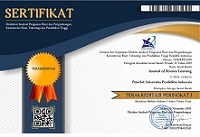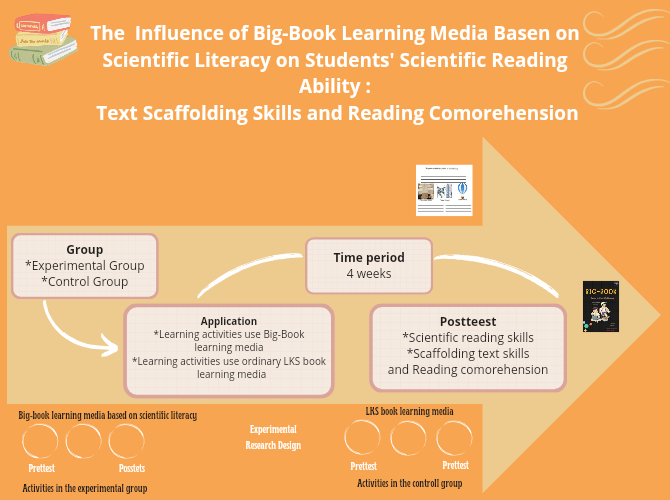
The Influence of Big-Book Learning Media Based on Scientific Literacy on Students' Scientific Reading Ability: Text Scaffolding Skills and Reading Comprehension
Abstract
Choosing the right learning media is needed to improve 21st-century knowledge and skills, such as scientific reading skills. Big-Book is a learning medium in the form of a book that is relatively large in size and contains picture illustrations and text. This research aims to determine the implementation and influence of scientific literacy-based big-book learning media on students' scientific reading abilities. The method used in this research is Quasi-Experimental. The subjects used in this research were class VII students, junior high school using 2 classes consisting of 30 students. Sampling was carried out using purposive sampling, namely taking samples with certain considerations. The data collection technique in this research is a test by conducting a pretest and posttest. Meanwhile, the data analysis technique used is the ANCOVA analysis test. The research results based on the ANCOVA test show a significance value of 0.00 <- 0.05, meaning that big-book learning media based on scientific literacy has a significant difference or influence on students' scientific reading abilities. So this research concludes that big-book media based on scientific literacy is very suitable to be used as a support for special learning regarding scientific reading skills.
Keywords
Full Text:
Download PDFReferences
Adnan, A., Yamin, M., Aulia, M., & Kurniawati, R. (2019). Penggunaan Big Book dalam pembelajaran membaca permulaan di sekolah dasar [The use of the Big Book in early reading learning in elementary schools]. Jurnal Basicedu, 3(3), 963-969.
Anindita, A. M., & Pertiwi, F. N. (2022). Komparasi Jigsaw dan Cooperative Integrated Reading and Composition (CIRC) Terhadap Kemampuan Menggali Informasi Peserta Didik [Comparison of Jigsaw and Cooperative Integrated Reading and Composition (CIRC) on Students' Information Digging Ability]. Jurnal Tadris IPA Indonesia, 2(2), 171-185.
Curtain, H., & Dahlberg, C.A. (2010). Languages and children: Making the match: New language for young learners, grades K-8 (4th ed.). Pearson.
Diansyah, A. R., Saputra, D. S., & Kurino, Y. D. (2019, October). Media pembelajaran big book sebagai penunjang dalam pembelajaran membaca permulaan di sekolah dasar [Big book learning media as a support for initial reading learning in elementary schools]. In Prosiding Seminar Nasional Pendidikan (Vol. 1, pp. 181-189).
Fang, Z., & Wei, Y. (2010). Improving middle school students’ science literacy through reading infusion. The Journal of Educational Research, 103(4), 262-273.
Garner, R., Gillingham, M. G., & White, C. S. (1989). Effects of'seductive details' on macroprocessing and microprocessing in adults and children. Cognition and instruction, 6(1), 41-57.
Hani'ah, R., & Fadly, W. (2022). Terampil Membuat Kesimpulan Melalui Model Inkuiri Berbasis Science Education for Sustainable Development [Skilled at Making Conclusions Through Inquiry Models Based on Science Education for Sustainable Development]. Jurnal Tadris IPA Indonesia, 2(3), 336-346.
Helwig, R., Anderson, L., & Tindal, G. (2002). Using a concept-grounded, curriculum-based measure in mathematics to predict statewide test scores for middle school students with LD. The Journal of Special Education, 36(2), 102-112.
Jamil, A. U., Listyono, L., & Norra, B. I. (2020). Pengembangan Big Book untuk Meningkatkan High Order Thinking Skill Siswa SMP [Big Book Development to Improve High Order Thinking Skills of Middle School Students]. Bioeduca: Journal of Biology Education, 2(2), 125-134.
Jo, S. M. (2011). The mediation effect of cognitive self-regulated learning strategy in the relationships between self-efficacy and achievement in science. Journal of the Korean Association for Science Education, 31(6), 958-969.
Karumpa, A., Halimah, A., & Sulastri, S. (2022). Efektivitas Penggunaan Media Pop Up Book dan Big Book terhadap Kemampuan Siswa Memahami Isi Bacaan [Effectiveness of Using Pop Up Book and Big Book Media on Students' Ability to Understand Reading Content]. Jurnal Onoma: Pendidikan, Bahasa, Dan Sastra, 8(2), 818-825.
Mahsun, M., & Koiriyah, M. (2019). Meningkatkan Keterampilan Membaca melalui Media Big Book pada Siswa Kelas IA MI Nurul Islam Kalibendo Pasirian Lumajang [Improving Reading Skills through Big Book Media for Class IA MI Nurul Islam Kalibendo Pasirian Lumajang Students]. Bidayatuna Jurnal Pendidikan Guru Mandrasah Ibtidaiyah, 2(1), 60-78.
Masruroh, L., & Arif, S. (2021). Efektivitas model problem based learning melalui pendekatan science education for sustainability dalam meningkatkan kemampuan kolaborasi [The effectiveness of the problem based learning model through the science education for sustainability approach in increasing collaboration capabilities]. Jurnal Tadris IPA Indonesia, 1(2), 179-188.
McNamara, D. S., Ozuru, Y., & Floyd, R. G. (2011). Comprehension challenges in the fourth grade: The roles of text cohesion, text genre, and readers' prior knowledge. International electronic journal of elementary education, 4(1), 229-257.
Meneses, A., Escobar, J. P., & Véliz, S. (2018). The effects of multimodal texts on science reading comprehension in Chilean fifth-graders: text scaffolding and comprehension skills. International Journal of Science Education, 40(18), 2226-2244.
Muliawanti, S. F., Amalian, A. R., Nurasiah, I., Hayati, E., & Taslim, T. (2022). Analisis Kemampuan Membaca Pemahaman Siswa Kelas Iii Sekolah Dasar [Analysis of Reading Comprehension Ability of Grade III Elementary School Students]. Jurnal Cakrawala Pendas, 8(3), 860-869.
Nazilah, N., Muharrami, L. K., Rosidi, I., & Wulandari, A. Y. R. (2019). Pengaruh bahan ajar berbasis socio-scientific issues pada materi pemanasan global untuk melatih kemampuan literasi sains siswa The influence of teaching materials based on socio-scientific issues on global warming material to train students' scientific literacy skills]. Natural Science Education Research (NSER), 2(1), 8-16.
Nisrina, N., Jufri, A. W., & Gunawan, G. (2020). Pengembangan LKPD berbasis blended learning untuk meningkatkan literasi sains peserta didik [Development of blended learning-based LKPD to increase students' scientific literacy]. Jurnal Pijar MIPA, 15(3), 192-199.
Pfost, M. (2015). Children’s phonological awareness as a predictor of reading and spelling. Zeitschrift für Entwicklungspsychologie und pädagogische Psychologie.
Rahmadini, R., Zulela, M. S., Sumantri, M. S., & Iasha, V. (2020). Pembimbingan Peserta Didik Kelas Awal yang Mengalami Hambatan dalam Membaca Permulaan [Guidance for Early Grade Students Who Experience Barriers in Beginning Reading]. Elementary School: Jurnal Pendidikan dan Pembelajaran ke-SD-an, 7(2).
Rahmalia, R., Hajidin, H., & Ansari, B. I. (2020). Peningkatan kemampuan komunikasi matematis dan disposisi matematis siswa smp melalui model problem based learning [Improving mathematical communication skills and mathematical disposition of junior high school students through the problem based learning model]. Numeracy, 7(1), 137-149.
Ritonga, S., & Rambe, R. N. (2022). Penggunaan media big book dalam meningkatkan kemampuan membaca permulaan siswa kelas rendah sekolah dasar [The use of big book media in improving the initial reading skills of lower grade elementary school students]. Jurnal Cakrawala Pendas, 8(4).
Sanjaya, W. (2006). Strategi Pembelajaran [Learning Strategies]. Kencana Prenada Media Group.
Sintia, A., & Ramadhan, S. (2023). Pengaruh Model Pembelajaran Kooperatif Tipe CIRC terhadap Keterampilan Membaca Pemahaman Teks Deskripsi Siswa Kelas VII SMP Negeri 1 Painan [The Influence of the CIRC Type Cooperative Learning Model on Reading Skills and Comprehension of Text Descriptions of Class VII Students at SMP Negeri 1 Painan]. Jurnal Pendidikan, 32(2), 339-346.
Sutrisna, N. (2021). Analisis kemampuan literasi sains peserta didik SMA di Kota Sungai Penuh [Analysis of the scientific literacy abilities of high school students in Sungai Penuh City]. Jurnal Inovasi Penelitian, 1(12), 2683-2694.
Tangen, J. M., Constable, M. D., Durrant, E., Teeter, C., Beston, B. R., & Kim, J. A. (2011). The role of interest and images in slideware presentations. Computers & Education, 56(3), 865-872.
Tursinawati, T., & Widodo, A. (2019). Pemahaman nature of science (NoS) di era digital: perspektif dari mahasiswa PGSD [Understanding the nature of science (NoS) in the digital era: perspectives from PGSD students]. JIPI (Jurnal IPA dan Pembelajaran IPA), 3(1), 1-9.
Unsworth, N., Fukuda, K., Awh, E., & Vogel, E. K. (2014). Working memory and fluid intelligence: Capacity, attention control, and secondary memory retrieval. Cognitive psychology, 71, 1-26.
Zulfah, M. A., & Mahmudi, A. (2021). Development of Learning Media through Interactive Quiz. SCHOOLAR: Social and Literature Study in Education, 1(1), 65-70.
DOI: https://doi.org/10.17509/jsl.v7i2.63602
Refbacks
- There are currently no refbacks.
Copyright (c) 2024 Rifa Mufidah, Wirawan Fadly, Martinez David

This work is licensed under a Creative Commons Attribution-ShareAlike 4.0 International License.
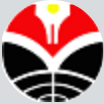

Jl. Dr. Setiabudhi 229 Bandung 40154, West Java, Indonesia





